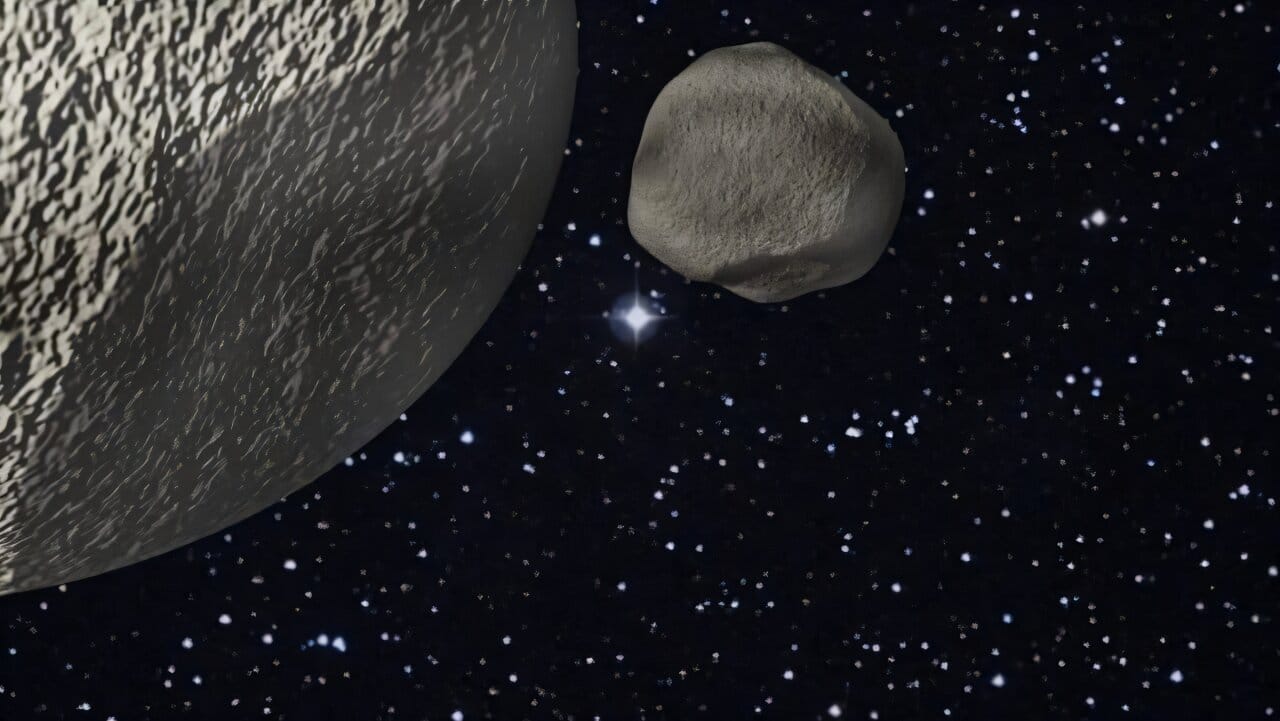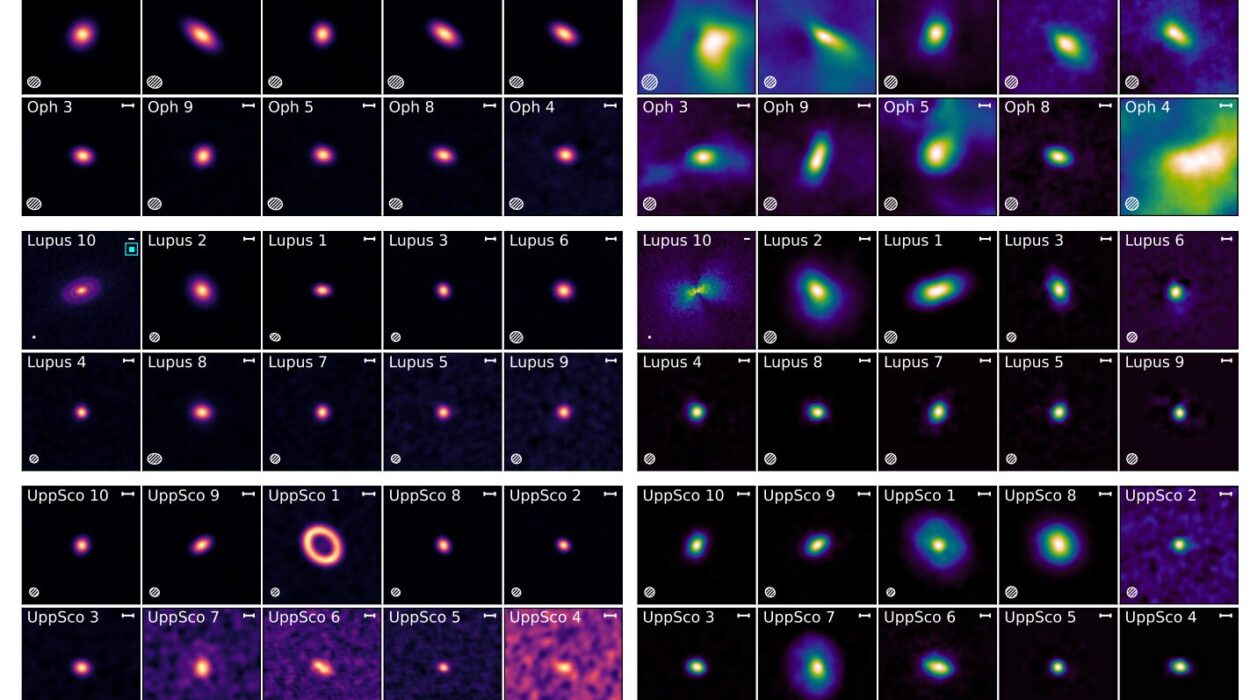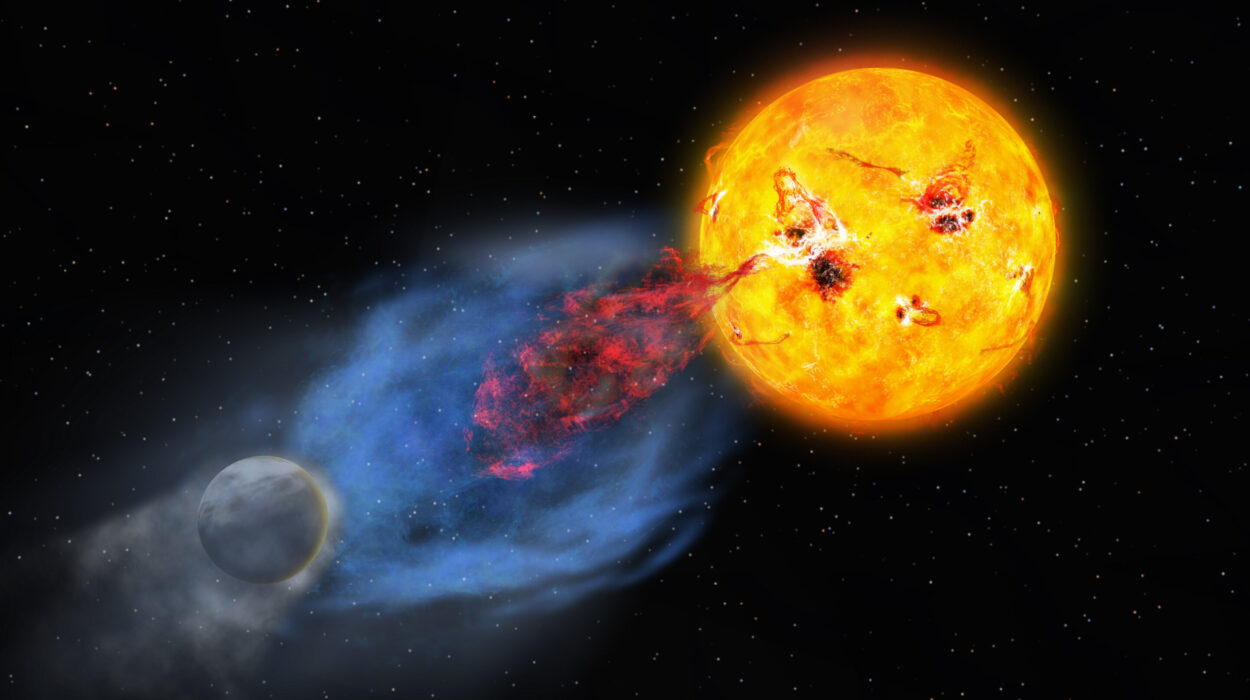Far beyond Neptune, where sunlight is little more than a whisper and the cold is eternal, lies a vast and mysterious region filled with ancient wanderers. These are the Trans-Neptunian Objects, or TNOs—icy, distant relics left over from the chaotic dawn of our solar system. They are not as glamorous as planets, not as famous as comets, but they are time capsules. Silent messengers from a forgotten age.
Pluto is the celebrity among them, once a planet, now a dwarf, its status hotly debated in textbooks and classrooms. But it’s only one of thousands. Most TNOs drift in darkness, following strange, slanted paths around the sun, tilted and stretched in ways that defy easy explanation. For years, astronomers have asked: Why are these orbits so skewed? And why do their surfaces come in such a puzzling variety of colors—from pale gray to deep, rusty red?
Now, new research suggests an extraordinary answer: that long ago, another star flew past our solar system, tugging at its edges like a thief brushing the fringe of a cloak. And in that fleeting encounter, the solar system was reshaped.
Fossils in Motion
The TNOs are more than just leftovers. They are survivors—frozen pieces of the primordial protoplanetary disk from which all the planets were born. These icy bodies formed in the outer reaches of that disk, far from the heat of the infant sun, in a time when space was crowded and chaotic. Giant planets like Jupiter and Neptune were still migrating, reshaping the solar system with their gravitational might.
As these massive bodies moved, they stirred the disk violently, scattering the small objects like marbles on a glass floor. Some were flung into deep space, lost forever. Others were trapped in distant, elongated orbits, their paths bent into strange loops. These became the TNOs we see today. Many of them dwell in what astronomers call the scattered disk, a region beyond Neptune where eccentric and inclined orbits are the norm.
And then there’s the color mystery.
Thanks to wide-field sky surveys like OSSOS (the Outer Solar System Origins Survey) and the Dark Energy Survey, scientists have begun to catalog the subtle hues of TNO surfaces. Some are dusky gray. Others are vibrant red. These colors aren’t random—they hint at the chemistry on the surface, likely the result of complex carbon-based compounds like tholins, which form under ultraviolet radiation. Pluto’s red tint, for instance, comes from tholins that coat its icy skin like a layer of old varnish.
But what puzzled astronomers was not just the variety of colors—it was the pattern. Redder TNOs tend to follow less inclined, more circular orbits. Grayer ones often have more extreme inclinations. Why would color be tied to orbit?
The solar system had left a riddle in the dark. And solving it required going back to a time before the planets were fully formed.
A Star Brushes the Sun’s Cradle
The answer may lie in the sun’s lost childhood.
Our star was not born alone. Like most stars, the sun likely formed in a dense stellar nursery, a place filled with hundreds or thousands of other young stars. In such environments, stellar flybys—close gravitational encounters between stars—are not rare. Though the sun now resides in a relatively lonely patch of the Milky Way, it was once surrounded by siblings. And in those crowded conditions, a near-miss could have changed everything.
That’s the hypothesis explored by a team of researchers led by Professor Susanne Pfalzner of the Jülich Supercomputing Center in Germany. Their new study, soon to be published in The Astrophysical Journal Letters, simulates what happens when a star—about 80% the mass of our sun—passes close to the outer regions of the early solar system.
Using supercomputers, they modeled this cosmic encounter in extraordinary detail, populating a young protoplanetary disk with tens of thousands of particles and assigning each one a color, from red near the inner disk to blue and gray farther out. This wasn’t just artistic choice—it was meant to reflect a likely chemical gradient in the early solar system, where heat and radiation would have affected materials differently depending on how close they were to the sun.
A Spiral Twist in Space
The simulations revealed something stunning.
As the passing star neared the solar system—its closest approach just 110 astronomical units from the sun, slightly farther than the orbit of Eris—it twisted the disk like a ribbon. The icy planetesimals were nudged into spiral arms, their orbits stretched and tilted by the star’s gravity. Some particles were flung outward. Others were jostled into new paths, their once-ordered orbits made chaotic.
This kind of gravitational dance doesn’t take long. Within about 12,000 years—just a blink on cosmic timescales—the encounter was over. But the damage, or rather the transformation, was done. The outer disk was reshaped into a pattern that looks strikingly like the scattered disk we observe today.
But it wasn’t just the orbits that changed. The colors of the particles—their assigned chemical identities—were scattered along with their paths. Redder particles remained in low-inclination, more circular orbits, similar to what we see in some real-world TNOs. The grayer ones ended up on higher-inclination, more eccentric orbits.
This color-orbit relationship, which had long puzzled astronomers, emerged naturally from the simulation.
The team then ran the clock forward—1 billion years of simulated evolution. As expected, the patterns blurred with time, as collisions, solar radiation, and other gravitational effects continued to sculpt the disk. Yet even after all that time, the core correlation remained: redder objects tended to cling to their original paths, while grayer ones wandered farther.
It was a digital echo of reality.
Looking to the Future: LSST and the Legacy of Light
This idea—that a single, ancient flyby could explain both the orbits and the colors of TNOs—is compelling. It connects the dynamics and chemistry of the outer solar system in a way no previous model has. But as always in science, a theory must be tested.
That’s where the Vera Rubin Observatory comes in.
Set to begin its Legacy Survey of Space and Time (LSST) soon, this groundbreaking telescope will scan the night sky with unprecedented detail for ten years. It is expected to increase the known population of TNOs tenfold, revealing thousands of new distant objects. And with them, a rich dataset of colors, motions, and compositions.
The team behind the flyby simulation is already thinking ahead. They’ve predicted what the LSST might find if their theory holds: fewer bright red TNOs in distant, inclined orbits, and more muted colors in the far reaches. If those predictions match reality, it would be a major step toward confirming that the outer solar system was indeed shaped by a brief stellar visitor.
The Star That Passed in the Night
If the flyby really happened—and evidence is mounting—it occurred in the first few million years of the solar system’s life. The perturber star would have been part of the sun’s birth cluster, now long dispersed across the galaxy. We may never identify the exact star. It could now be drifting quietly among billions, its ancient role in our history lost to time.
But its signature remains.
In the cold, outer dark, the TNOs still carry the memory—in their colors, in their orbits, in their presence. They are like fingerprints left in frozen dust, telling a story of chaos, chemistry, and cosmic chance.
And that, perhaps, is the wonder of astronomy.
We are not only exploring worlds. We are uncovering ancient encounters. We are tracing scars that no longer bleed but still speak. And in every icy red orb, every gray wanderer, we hear the echo of a star that once passed too close—and changed everything.
Reference: Susanne Pfalzner et al, TNO colours provide new evidence for a past close flyby of another star to the Solar System, arXiv (2025). DOI: 10.48550/arxiv.2507.06693






